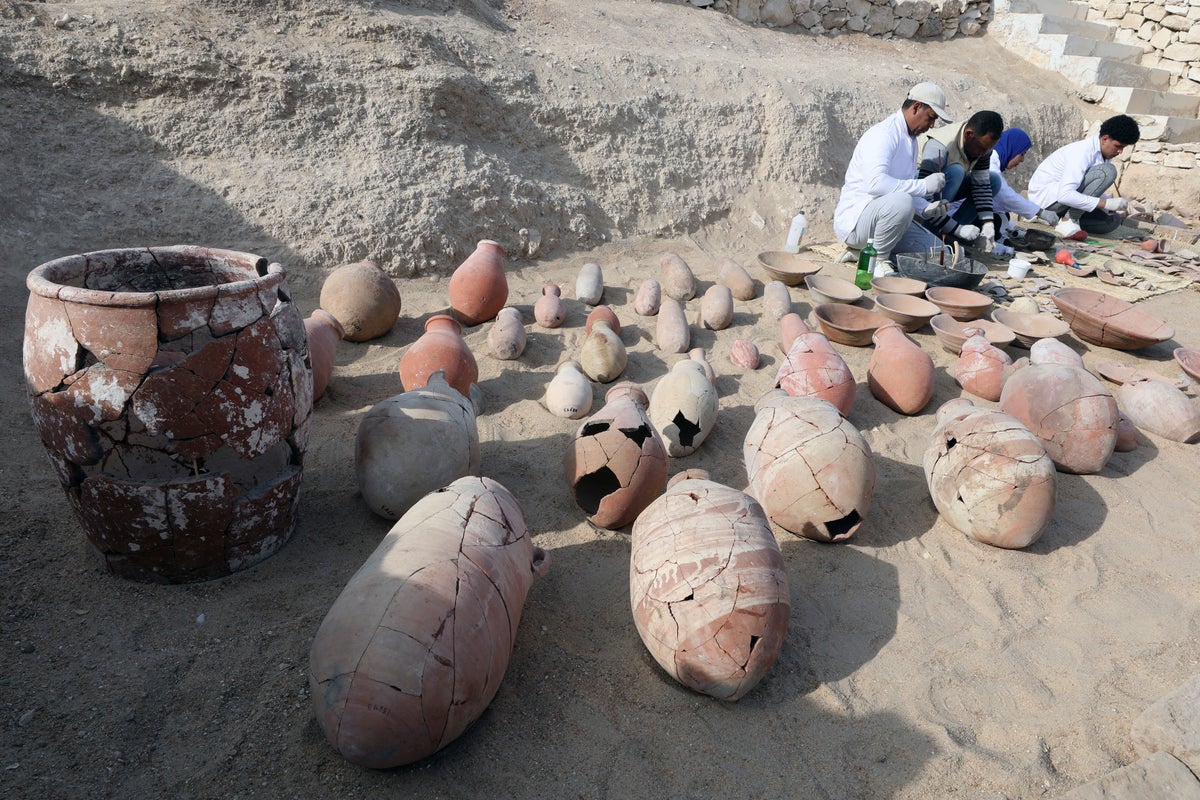Archaeologists make 'history-changing' discovery near Tutankhamun's tomb in Egypt
Share:
Archaeologists have made a significant discovery in the region of Egypt where King Tutankhamun was discovered, which they say 'reconstructs history.'. They uncovered 11 wooden coffins, including one for a child, inside rock-cut tombs and burial shafts hundreds of feet below the surface of the city of Luxor.
![[Luxor is famously known for its oldest and most ancient Egyptian sites, along with being home to the Valley of Kings where King Tut was discovered]](https://i.dailymail.co.uk/1s/2025/01/15/20/94133789-14288121-Luxor_is_famously_known_for_its_oldest_and_most_ancient_Egyptian-a-9_1736972960572.jpg)
The wealth of artifacts found during the excavation could reveal clues to the lives of ancient Egyptians 3,600 years ago. The discoveries, experts said, provide clues to ancient Egyptian,symbols, layout, rituals, and practices in their temples. The trove of goods included bronze coins with the image of Alexander the Great dating to the Time of Ptolemy I (367-283BC), children's toys made of clay and funerary masks that covered mummies, winged scarabs, beads and amulets.
![[Head of Egypt's Supreme Council of Antiques Mohammad Ismail shows and discusses fragments of stones displaying scenes of rituals during media event inside to announce new discoveries in Queen Hatshepsut's Valley Temple]](https://i.dailymail.co.uk/1s/2025/01/15/17/94130099-14288121-Head_of_Egypt_s_Supreme_Council_of_Antiques_Mohammad_Ismail_show-a-15_1736961971726.jpg)
Looters are believed to have picked through the tombs over the past centuries but left behind pottery tables used to offer bread, wine, meat and archer’s bows that could link the tomb’s owners to the Egyptian military. The remains of Queen Hatshepsut's Valley Temple was also uncovered for the first time.
![[Display revealing children's dolls and toys made from clay (back left corner), bronze coins engraved with imagery of Alexander the Great (front center), and winged scarabs (front center) found within the rock-cut tombs.]](https://i.dailymail.co.uk/1s/2025/01/15/20/94130097-14288121-Display_revealing_children_s_dolls_and_toys_made_from_clay_back_-a-10_1736972960658.jpg)
She was the first woman pharaoh of Egypt, reigning from around 1479 to 1458BC. Burial Chamber containing multiple adjacent coffins that display some of the 11 burials discovered within the rock-cut tombs. Luxor is famously known for its oldest and most ancient Egyptian sites, along with being home to the Valley of Kings where King Tut was discovered.






















